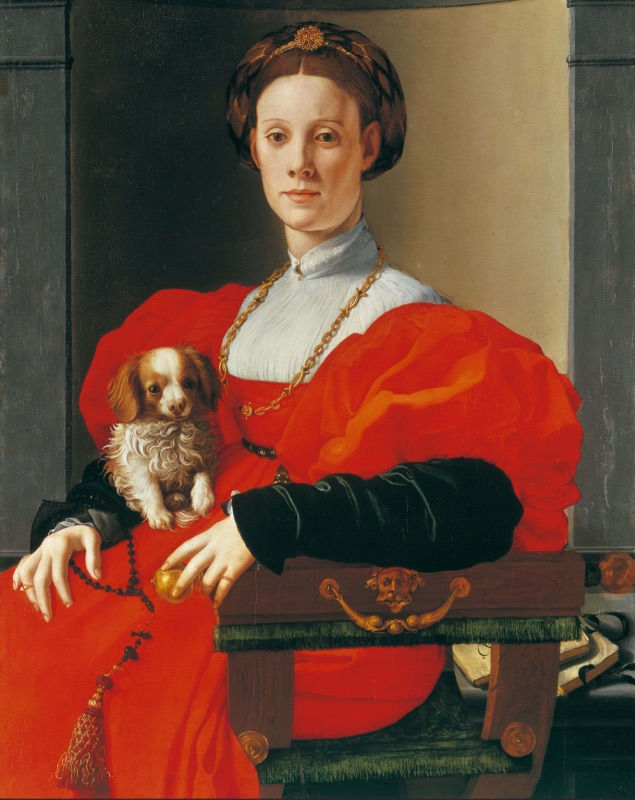A Reaction to Classical Perfection: The Rise of Mannerism
Mannerism, an artistic movement emerging at the twilight of the Renaissance, challenged the ideals of classical perfection inherited from Antiquity.
Representing a new aesthetic vision, it reshaped traditional canons with a deliberate departure from the harmonious principles of the High Renaissance.
In Italy, prominent figures of this movement included Pontormo, Parmigianino, Bronzino, and Arcimboldo.
Influenced by the works of Raphael and Michelangelo, these artists embraced artificiality, defied Alberti’s laws of perspective, and emphasized movement, exaggerated gestures, and arabesque designs. Their approach, prioritizing style over classical order, laid the groundwork for the Baroque style to follow.
The Origins and Philosophy of Mannerism
Emerging in the 1520s, Mannerism (derived from the word maniera, meaning style) introduced a profound shift in art. Moving away from classical and mathematical precision, it placed artificiality and expressiveness at the core of its aesthetic. This new mindset was influenced by the death of Raphael and the societal upheavals of the time, including the growing schism between Catholics and Protestants. As papal authority waned, religious art diversified, allowing Mannerist artists greater freedom in reinterpreting traditional iconography. The movement largely concluded in Italy by the 1580s.
Characterized by exaggerated proportions and forms, Mannerist art often depicted figures with serpentine (S-shaped) lines, theatrical compositions, dramatic lighting contrasts, and expressive gestures. These elements lent the works an almost otherworldly quality, bordering on the bizarre.
Florence became the epicenter of Italian Mannerism. Among its notable practitioners, Bronzino, a pupil of Pontormo, distinguished himself as the court painter of Cosimo I de' Medici. His work is recognized for its refined palette, including light and acidic tones, and for his mastery in aristocratic portraiture and allegorical themes.
Another key figure, Giuseppe Arcimboldo, captured the Mannerist spirit through his imaginative and surreal allegories inspired by nature. Known for works like The Four Seasons, Arcimboldo’s paintings transformed still life into lively visual puzzles.
While some critics dismissed Mannerism as a decadent imitation of Renaissance masters like Raphael and Michelangelo, its proponents pursued originality through their literary sophistication and a focus on elite audiences. The movement’s appeal extended across Europe, influencing Flemish art, particularly in Antwerp, and French art through the Fontainebleau School under Rosso Fiorentino and Primaticcio.
Selected Masterpieces of Mannerism
Agnolo Bronzino, Portrait of a Lady in Red (1525–1530)This enigmatic portrait epitomizes the Mannerist style with its intricate detailing, allegorical undertones, and the illusionistic depiction of rich fabrics. The aristocratic subject, dressed in an opulent red gown, embodies virtue and refinement. The pale complexion, a hallmark of Mannerist portraits, further enhances the ethereal quality of the figure.

Parmigianino, The Virgin with the Long Neck (1534–1535)This painting exemplifies Mannerist exaggeration, with the Virgin Mary’s elongated neck and the disproportionate, precariously placed Christ Child. Smaller angelic figures enhance the composition’s strangeness and divine aura. Commissioned for a Parma church, it reflects the artist’s fascination with elegance and otherworldliness.

Giuseppe Arcimboldo, Autumn (1563)Part of a series depicting the four seasons, this allegorical portrait reimagines autumn as a bearded man composed of fruits and vegetables. Grapes prominently feature in the figure’s design, showcasing Arcimboldo’s inventive approach. Celebrated for its whimsy, the work appealed to collectors of curiosities who admired its blend of natural and fantastical elements.

Mannerism’s legacy, marked by its innovative departure from Renaissance ideals, bridges the gap between the harmony of its predecessor and the drama of the Baroque period. seen in Beaux Arts
art expert

Comments